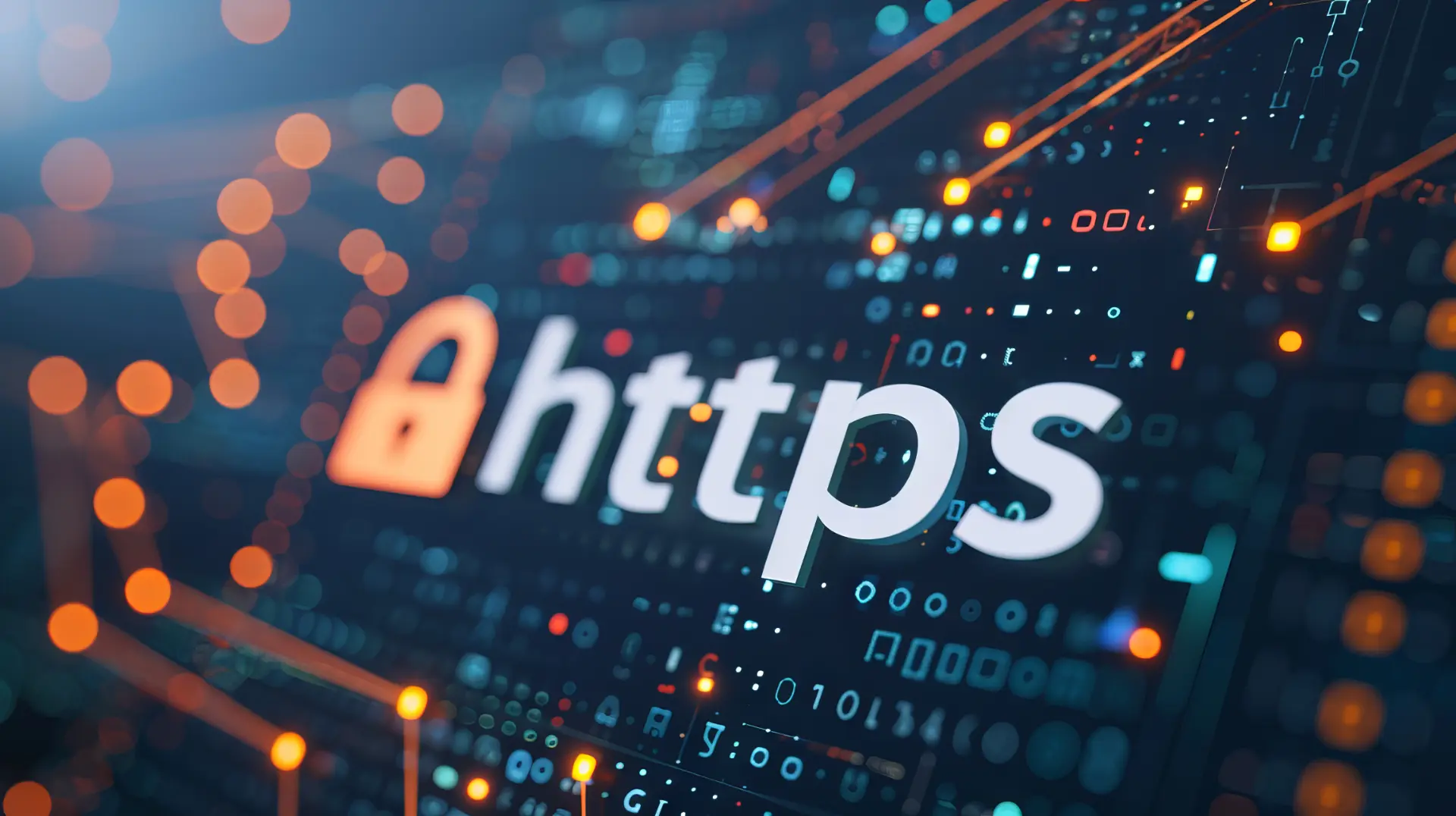Table of contents
- Check the browser’s address bar
- Examine the design and content of the website
- Verify contact information
- Use Google Safe Browsing and other tools
- Search for online reviews and feedback
- Typical indicators of unsafe websites
- How to verify the authenticity of a website
In an increasingly digital world, knowing how to verify the authenticity of a website is essential for protecting your personal data and sensitive information.
The threat of fraudulent websites is real, and thousands of people fall victim to online scams every day. However, by following the correct procedure to verify a site’s authenticity, you can browse more safely and safeguard your sensitive data.
Check the browser’s address bar
The first step in determining if a website is secure is to check the browser’s address bar.
Make sure the URL starts with “https://” instead of “http://.” The presence of “s” indicates that the site uses an SSL (Secure Sockets Layer) certificate, which ensures that the data transmitted between your browser and the website is encrypted and more difficult to intercept.
Additionally, paying attention to the domain name is crucial. Fraudsters often use domains that are very similar to legitimate ones, changing just one letter or adding a hyphen.
Example:
A fraudulent site might use “amaz0n.com” instead of “amazon.com.” This small detail can make a big difference, and you can verify the domain’s authenticity by conducting a simple search in search engines.
Examine the design and content of the website
Another method to verify a site’s authenticity is to closely examine its design and web content.
Legitimate websites tend to have a professional and polished appearance, whereas fraudulent sites often contain spelling mistakes, poor design, or low-quality images. A site that appears sloppy or amateurish can be a red flag.
Moreover, an authentic website will have complete sections like “About Us,” “Contact,” and often a FAQ section. If these sections are missing or poorly detailed, it might indicate that the site is not trustworthy.
Verify contact information
Before making any online purchases, it’s important to check if the site provides contact details like a physical address, a phone number, and a corporate email address.
A legitimate site will have this information readily accessible. If in doubt, try contacting the company. A non-functional phone number or an email address that returns an error are signs that the site might be unreliable.
Use Google Safe Browsing and other tools
For added security, you can use online tools like Google Safe Browsing.
This service allows you to see if a site has been reported as dangerous or has been involved in fraudulent activities. By entering the site’s URL, you can quickly check and verify its reputation and decide if it’s safe to visit.
Another useful tool is to verify the site’s certificate. By clicking on the lock icon in the browser’s address bar, you can view the details of the SSL certificate and check which authority issued it.
Trusted certification authorities include names like DigiCert, GlobalSign, and Let’s Encrypt.
Search for online reviews and feedback
It’s always a good idea to look for reviews and feedback about a website before entering sensitive information like your credit card data.
Search engines can be a powerful tool for this. Search the site’s name along with keywords like “scam” or “reviews” to see if other users have had negative experiences.
A site with many negative or absent reviews could be risky.

Typical indicators of unsafe websites
An unsafe website exhibits several characteristics that may indicate it is not reliable. Recognizing these signs is crucial to avoiding scams or exposing your personal data to risk.
Here are some common indicators that a site might not be secure:
- Lack of an SSL certificate
One of the first signs of an insecure site is the absence of an SSL certificate.
This is reflected in the URL starting with “http://” instead of “https://.” The missing “s” indicates that the connection between your browser and the site is not encrypted, making your personal data vulnerable to attacks.
A site without SSL may also display browser warnings like “Not Secure,” indicating a potential risk. - Spelling errors and amateur design
Another clear sign is the presence of spelling or grammar errors on the website.
A legitimate website tends to have well-crafted and professionally written content. In contrast, an insecure site often has glaring mistakes, indicating a lack of attention to detail.
Additionally, the design may appear unprofessional, with a cluttered layout, low-quality images, and an interface that does not meet current standards. - Suspicious domain name
The domain name of an unsafe site might closely resemble but not exactly match that of a legitimate site.
Fraudsters often use “typosquatting” techniques by registering domains with slight typos or minor variations compared to popular domain names, like “g00gle.com” instead of “google.com.”
This is a clear indication that it might be an attempt at phishing or fraud. - Lack of contact information
A secure website usually provides clear contact details like a phone number, a physical address, and an email.
If a site does not offer this information, or if the provided details seem generic or hard to verify, it may indicate that the site is not trustworthy.
Some fraudulent sites include fake or difficult-to-verify contact information. - Offers too good to be true
If a site offers products or services at incredibly low prices or with deals that seem too good to be true, it could be a red flag.
Fraudsters often lure users with irresistible promotions only to steal money or sensitive information like credit card numbers. - Pop-ups and invasive ads
An insecure site may bombard you with pop-ups, invasive ads, or phishing attempts like unsolicited requests for personal information or credit card data.
These elements are often signs of a site designed to scam or infect your device with malware. - Lack of privacy policies
A legitimate site will have a clear privacy policy explaining how your personal data is collected, used, and protected.
The absence of a privacy policy or a vague, generic one can be an indication that the site does not adhere to security standards and may not adequately protect your information. - Results from Google Safe Browsing
Finally, you can use tools like Google Safe Browsing to check if a site has been flagged as dangerous.
By entering the site’s URL into this tool, you can quickly determine if it’s considered safe or if it has been involved in suspicious or fraudulent activities.
In summary, to avoid risks, paying attention to these signs will help you identify an insecure website and protect your sensitive data when browsing online.
How to verify the authenticity of a website
Verifying the authenticity of a website requires attention to detail and the use of various tools and strategies.
By following this proper procedure for verifying a site’s authenticity, you can browse more safely and protect your personal data from potential online threats.
Always pay attention to details like the domain name, the use of SSL certificates, and the presence of spelling errors. With a bit of practice, you’ll become adept at distinguishing a secure website from a fraudulent one.
Frequently asked questions
- How can I tell if a site is authentic?
You can check the authenticity of a site by looking at the address bar for “https://,” verifying the domain name, and using tools like Google Safe Browsing. - What does it mean for a site to be secure?
A secure site uses an SSL certificate, encrypting the data between the browser and the website, and shows a padlock in the address bar. - Is it safe to shop online on an unknown site?
Before making a purchase, check the site through reviews, verify the domain, and make sure it uses an SSL certificate. - How can I check if a site has an SSL certificate?
You can check the SSL certificate by clicking on the padlock icon in the browser’s address bar. - Why is verifying a site’s authenticity important?
Verifying a site’s authenticity protects your sensitive data and reduces the risk of fraud and identity theft. - What should I do if a site looks suspicious?
Avoid entering personal data or making purchases. You can report the site to search engines or use Google Safe Browsing. - Can I trust search engine results?
Not always. Some fraudulent sites may appear in search results. It’s important to always verify the site’s authenticity. - How can I check reviews for a site?
Search the site’s name online along with keywords like “reviews” or “scam” to see user feedback. - What should I do if I’ve given my data to an unsafe site?
Immediately change the passwords associated and monitor your banking transactions closely. - Are sites without “https://” always dangerous?
Not always, but it’s a sign that data is not encrypted, so it’s better to avoid them for entering sensitive information.
